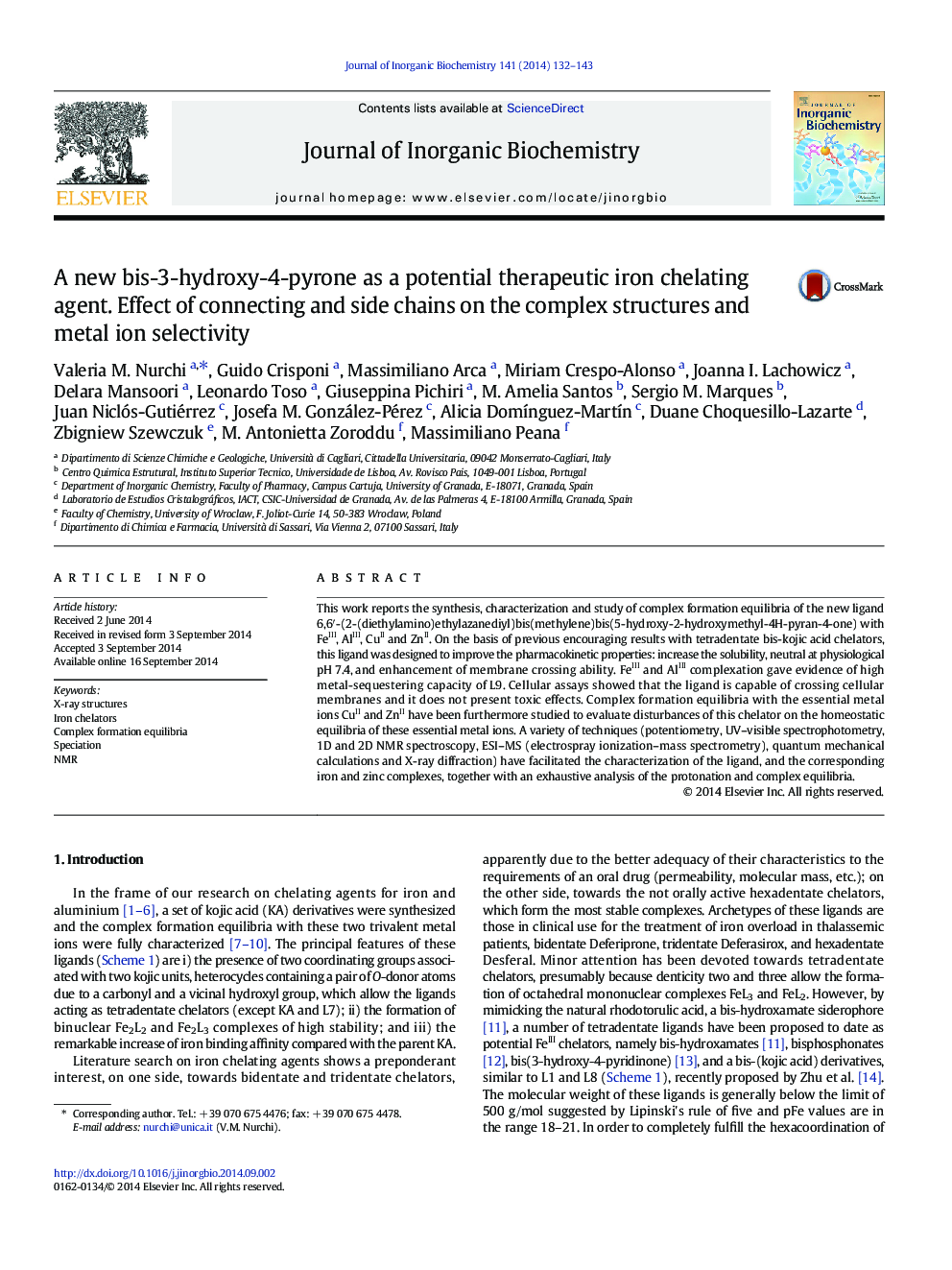| Article ID | Journal | Published Year | Pages | File Type |
|---|---|---|---|---|
| 1317266 | Journal of Inorganic Biochemistry | 2014 | 12 Pages |
•Synthesis, characterization of the ligand 6,6′-(2-(diethylamino)ethylazanediyl)bis(methylene)bis(5-hydroxy-2-hydroxymethyl-4H-pyran-4-one)•Study of complex formation equilibria with FeIII, AlIII, CuII and ZnII•FeIII and AlIII complexation gave evidence of high metal-sequestering capacity.•Structural characterization of the ligand, and of its iron and zinc complexes•The ligand is capable of crossing cellular membranes and does not present toxic effects.
This work reports the synthesis, characterization and study of complex formation equilibria of the new ligand 6,6′-(2-(diethylamino)ethylazanediyl)bis(methylene)bis(5-hydroxy-2-hydroxymethyl-4H-pyran-4-one) with FeIII, AlIII, CuII and ZnII. On the basis of previous encouraging results with tetradentate bis-kojic acid chelators, this ligand was designed to improve the pharmacokinetic properties: increase the solubility, neutral at physiological pH 7.4, and enhancement of membrane crossing ability. FeIII and AlIII complexation gave evidence of high metal-sequestering capacity of L9. Cellular assays showed that the ligand is capable of crossing cellular membranes and it does not present toxic effects. Complex formation equilibria with the essential metal ions CuII and ZnII have been furthermore studied to evaluate disturbances of this chelator on the homeostatic equilibria of these essential metal ions. A variety of techniques (potentiometry, UV–visible spectrophotometry, 1D and 2D NMR spectroscopy, ESI–MS (electrospray ionization–mass spectrometry), quantum mechanical calculations and X-ray diffraction) have facilitated the characterization of the ligand, and the corresponding iron and zinc complexes, together with an exhaustive analysis of the protonation and complex equilibria.
Graphical abstractSynthesis and characterization of a new hydroxypyrone capable of crossing cellular membranes without toxic effects are presented, with the study of complex equilibria with FeIII, AlIII, CuII and ZnII. A high metal-sequestering capacity is found for FeIII and AlIII. The ligand and its iron and zinc complexes are structurally characterized.Figure optionsDownload full-size imageDownload as PowerPoint slide
